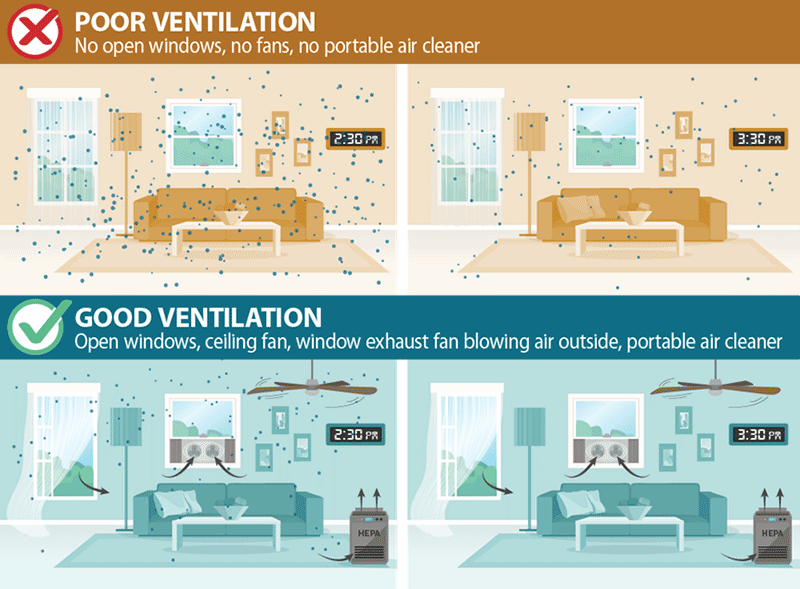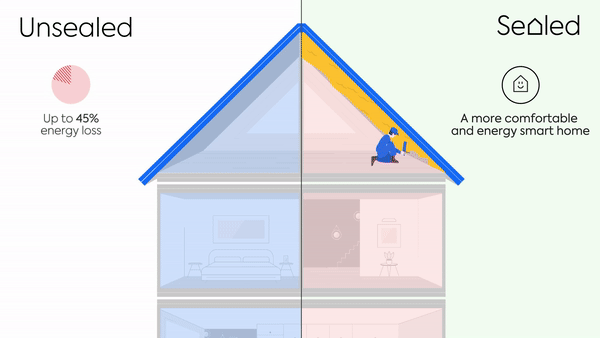Home Ventilation Melbourne vs DIY Options: Which Works Best?
Wiki Article
Understanding the Importance of Home Air Flow for a Healthier Living Atmosphere
Home ventilation plays a crucial role in keeping a healthy and balanced living environment. It promotes the exchange of outside and indoor air, which is important for boosting air high quality. Without appropriate air flow, homes can become breeding premises for pollutants and allergens. The repercussions of insufficient air flow can be considerable. This raises the questions of how house owners can successfully implement ventilation methods to guard their health and wellness and wellness. Understanding these approaches is necessary.
The Essentials of Home Ventilation
Home ventilation offers as an essential component of indoor air top quality and convenience. It entails the process of trading stale indoor air with fresh exterior air, consequently minimizing humidity and regulating temperature. Appropriate ventilation systems can include natural approaches, such as open home windows and vents, in addition to mechanical systems, such as exhaust fans and air exchangers. Reliable home air flow helps prevent problems like indoor mold growth and the accumulation of damaging fragments. It also enhances overall power efficiency, as well-ventilated spaces can maintain comfy temperature levels with much less dependence on home heating and cooling systems. Understanding the fundamentals of home air flow is vital for property owners looking for to produce a much healthier living environment on their own and their families.
Usual Resources of Indoor Air Contamination

Although several might not understand it, interior air contamination can stem from different resources within a family. Usual factors consist of volatile organic compounds (VOCs) released from paints, solvents, and cleansing products. Household home appliances, such as gas cooktops and fireplaces, can release hazardous gases like carbon monoxide and nitrogen dioxide. Additionally, mold and mildew and mold flourish in wet areas, releasing spores that impact air top quality. Pet dog dander, dust mites, and pollen can build up inside, further exacerbating contamination degrees. Smoking inside your home generates poisonous chemicals that remain airborne. Ultimately, constructing products, including asbestos and formaldehyde, can off-gas harmful materials. Identifying these sources is vital for preserving a much healthier interior setting and promoting reliable ventilation strategies.
Health Effects of Poor Air Flow
Indoor air contamination can have significant wellness ramifications, particularly when ventilation is poor. Poor ventilation can lead to the buildup of damaging contaminants, such as unstable organic compounds, mold and mildew, and particulate matter. This buildup may result in respiratory concerns, consisting of bronchial asthma, allergies, and persistent obstructive pulmonary illness. Individuals might experience symptoms like frustrations, fatigue, and irritation of the eyes, nose, and throat. Susceptible populations, such as kids and the elderly, go to greater risk for extreme wellness impacts. Lasting direct exposure to poorly ventilated environments can likewise add to extra severe problems, including cardio illness. Making certain correct ventilation is crucial for maintaining a healthy and balanced living environment and minimizing the danger of health issues linked with interior air pollution.Effective Ventilation Methods for Your Home
Proper air flow is necessary for preserving a healthy interior environment, and implementing efficient approaches can significantly improve air top quality. Property owners can begin by guaranteeing that exhaust fans are set up in washrooms and kitchen areas to eliminate excess wetness and odors. Opening home windows regularly permits fresh air to distribute, specifically during moderate weather. Furthermore, using air purifiers with HEPA filters can aid capture air-borne toxins. For homes with home heating and cooling down systems, preserving a/c systems and changing filters regularly is vital for peak performance. Incorporating natural ventilation techniques, such as cross-ventilation, can additionally boost airflow. Sealing any leakages in home windows and doors prevents unwanted drafts, which can interrupt regulated air flow, inevitably leading to enhanced indoor air high quality and comfort.Preserving Optimum Air Quality Year-Round
To keep excellent air quality year-round, home owners have to adopt a proactive technique to managing their indoor setting. Regularly keeping an eye on interior air quality is crucial; this includes monitoring for pollutants such as dirt, mold and mildew, and unpredictable natural substances (VOCs) Applying effective air flow systems, such as exhaust fans and air cleansers, can considerably reduce air-borne impurities. Additionally, regular maintenance of HVAC systems assurances peak performance and air flow. House owners must also think about humidity degrees, as excessive dampness can bring about mold development. Seasonal adjustments may require adjustments in ventilation strategies to suit varying exterior air quality. By prioritizing these methods, property owners can develop a healthier home, promoting overall well-being for all owners throughout the year.Often Asked Inquiries
How Can I Tell if My Home Requirements Much Better Air Flow?
To identify if a home needs far better ventilation, one should observe signs such as persistent humidity, mold and mildew growth, stuffy smells, condensation on windows, or enhanced allergy signs, suggesting poor air flow and possibly bad interior air high quality.What Are the Indicators of Poor Indoor Air Top Quality?

Can Houseplants Improve Indoor Air Quality Efficiently?
The performance of houseplants in boosting interior air quality is discussed. While some studies suggest they can absorb contaminants and generate oxygen, their general impact might be very little contrasted to proper ventilation and air filtration systems.How Frequently Should I Change My Air Filters?
The frequency of air filter adjustments usually relies on usage and filter type. Usually, it is advised to change filters every 3 months, though families with allergic reactions or pet dogs may need more frequent changes for suitable performance.Exist Any Details Ventilation Equipments for Allergy Sufferers?
Many ventilation systems, such as HEPA-filtered devices, properly decrease allergens in the air. Home Ventilation Melbourne. These systems catch dust, pollen, and family pet dander, giving allergy victims with a cleaner, much healthier indoor setting while taking care of air top quality efficiently
It facilitates the exchange of indoor and outside air, which is essential for boosting air high quality. Home ventilation offers as a necessary element of interior air high quality and convenience. It entails the procedure of trading stagnant interior air with fresh exterior air, thus decreasing moisture and regulating temperature. Interior air pollution can have significant wellness effects, specifically when ventilation is poor. Correct air flow is important for maintaining a healthy indoor Home Ventilation Melbourne atmosphere, and carrying out effective techniques can greatly improve air quality.
Report this wiki page